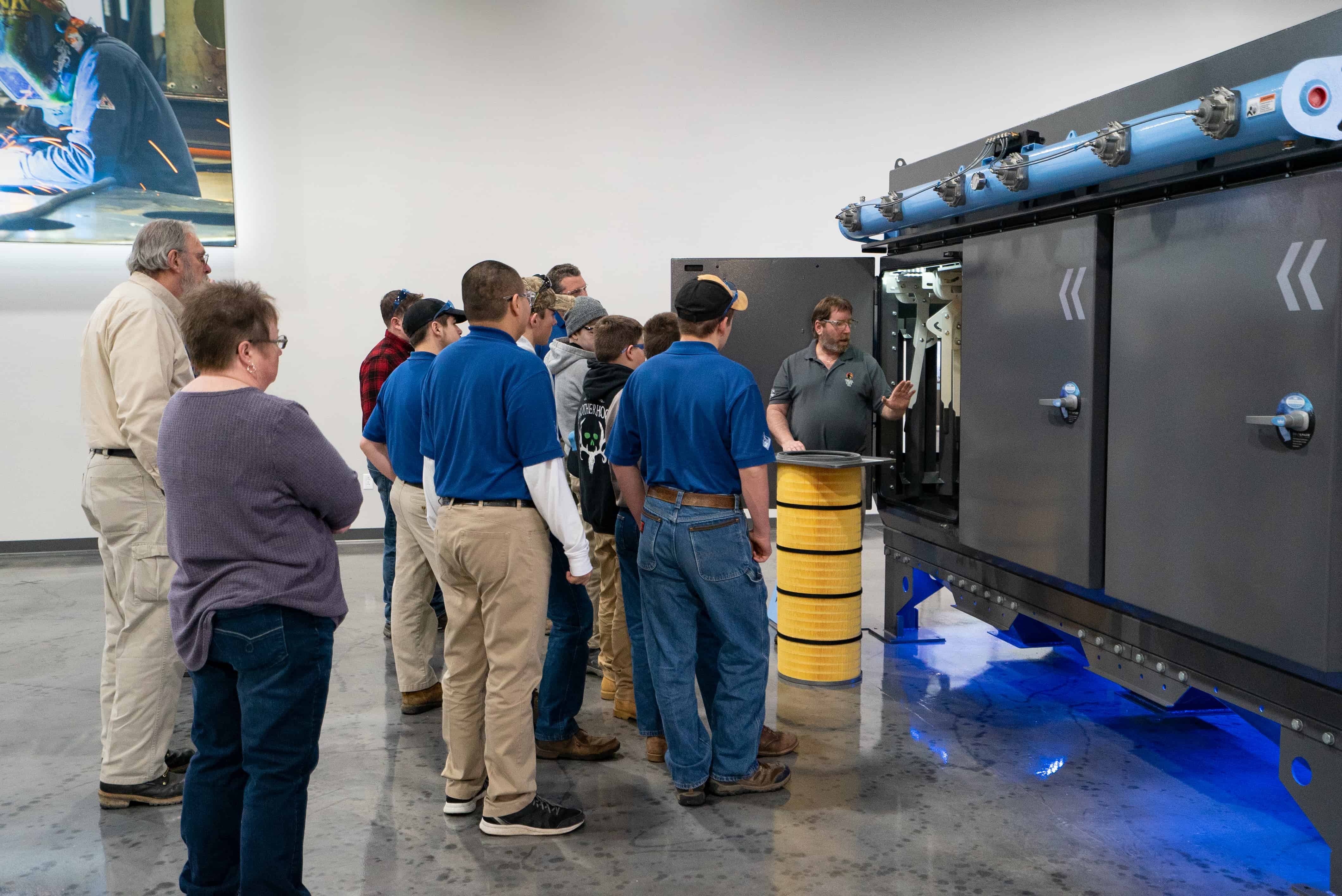
by Erin Long | Mar 5, 2019 | Hidden from Archive
Troy has been a draftsman and engineer at Imperial Systems for more than eleven years. When not at work, he dedicates most of this time to Trail Life USA where he is a Trail Master and mentor. While he doesn’t have time for many other hobbies, he does make a great brisket. He firmly believes in the power of a good meal to bring people together as a team, a tradition the engineering department here at Imperial Systems continue to share.
How long have you been here?
Since August 2007. Eleven and a half years.
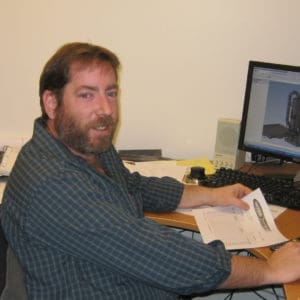 Did you start here as an engineer?
Did you start here as an engineer?
I responded to an ad for a draftsman. It was while they were still at the building in Grove City, and I saw it and didn’t think much of it. Then a little while later one of my friends showed me a big two‑page spread in the Sharon Herald about the new building in Jackson Center. So when they were hiring again, I jumped on it.
How did you get your start as an engineer?
I worked as an electrical draftsman in Sharpsville at first, and I was working on getting my degree. It took a while. By the time I graduated, I would have been sitting at commencement next to the guy that was going to marry my daughter. I took an AUTOCAD course and I basically helped teach the course because I knew so much about it. I got back into 3D drawing and got the 3D bug again.
So when did you officially become an engineer here?
Well, one day I got business cards that said “design engineer” on them, so I figured it was official.
 Outside of work, you dedicate a lot of time to the Boy Scouts, right?
Outside of work, you dedicate a lot of time to the Boy Scouts, right?
It’s actually Trail Life. We started out as Boy Scout troops, and I started working with them around 2001. Around 2014 some of us started to see some changes with the Boy Scouts, and some more changes coming down the pipe, that we didn’t feel like they were in line with our goals.
How did Trail Life get started? What makes it special?
It was formed at a conference in Nashville in 2014. I was really excited about the idea. I sat at my computer and clicked the button until registration opened. We were the first troop to register. It’s a faith-based organization that raises boys to be good Christian men and lead their families and churches. It’s all about men teaching boys how to be men.
What made you so excited about the idea of Trail Life?
I saw a real need for boys to have men to look up to. We need boys that can grow up to be leaders and be active in their community and their church. They need to be able to set a good example for their own kids. I still have respect for the Boy Scouts. My son was a Boy Scout until he got distracted by the fumes… you know, perfume and exhaust fumes.
Does your family have a history with scouting?
My father was an assistant Scout Master and committee member. He started as a Boy Scout from 1944 until the Korean War. He says the Boy Scouts saved his life many times while he was in Korea, using the skills he learned there. This has always been something I’ve been really involved in, and it’s important to me.
What age group do you work with?
I work mostly with boys in 6th, 7th, and 8th grade. I’m the Trail Master for that group. I’m involved with all the groups. When we have the awards banquets, I make brisket for everyone. In February I’m going to be bringing the boys in to talk to everyone who works here, marketing, sales, engineering, fabrication… we have vocational badges where the boys have to learn about the job and find out more about it. It’s important for them to learn what a job is really like so they’ll know if they’re going to like it.
What else do you do when you’re not working with Trail Life?
I don’t really have a lot of time for much else, with the 800 hours I spend away and the few hundred more hours I spend preparing. One trip we wanted to give the boys a chance to shoot guns, so I went and got my NRA instructor and my Range Safety Officer qualifications. My nephews played sports for Lakeview and at Edinboro, so if I couldn’t go to the games I listened to them on the radio. My wife took all the Lakeview sports photos until just recently.
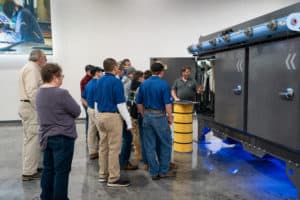 You said you love your job working here.
You said you love your job working here.
One thing I really like, we started when I worked at Packard Electric. I had a gas grill and one of the other guys had one too, and we worked afternoons, so we all got together and cooked for everyone. It really bonded us like family. The afternoon crew went from worst productivity to best.
And you guys still do that here.
We get together and grill or smoke food once a week. We even have our own smoker now. It really helps a group bond, work together better. You get to talk about problems and come up with solutions. It brings us together as a team.
It’s great to hear someone say they love their job.
That’s why the vocational badges are important to me for the boys. I want them to know the details about a job so when they do go out and get jobs, they can do something they love too.
Read more
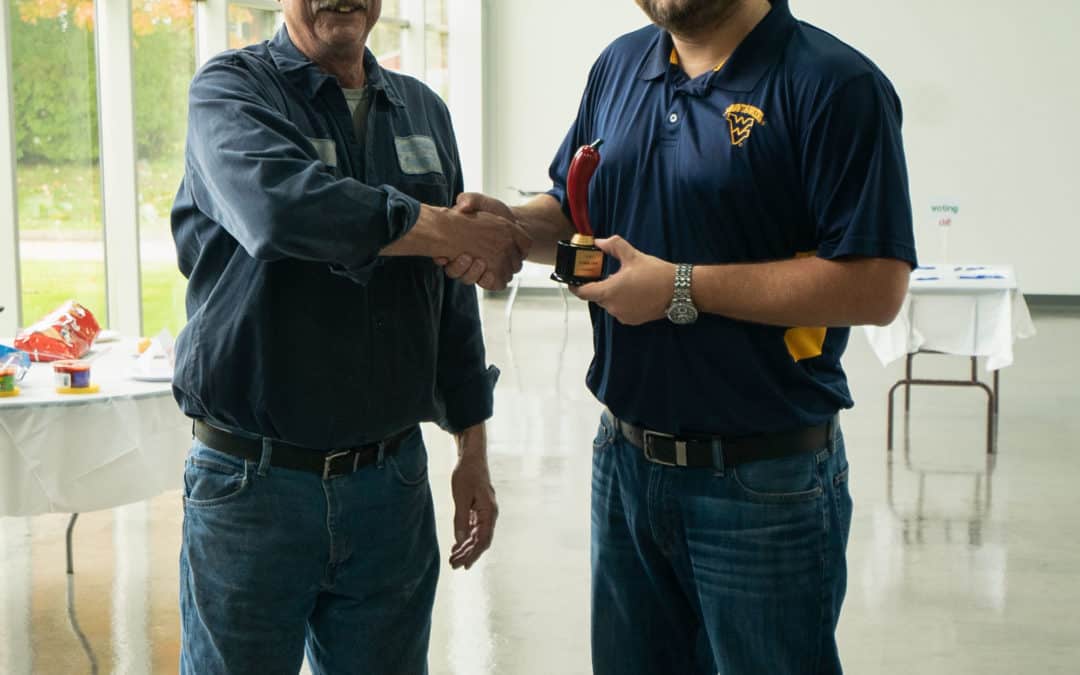
by Erin Long | Mar 5, 2019 | Hidden from Archive
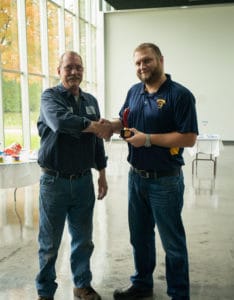 2018 was another great year for the Imperial Systems Annual Chili Cook-Off. There were a total of twelve chilis to try in varying heats ranging from mild to hot. After a taste (or two) of all the chilis, taste testers were able to cast their votes for their three favorite chilis.
2018 was another great year for the Imperial Systems Annual Chili Cook-Off. There were a total of twelve chilis to try in varying heats ranging from mild to hot. After a taste (or two) of all the chilis, taste testers were able to cast their votes for their three favorite chilis.
With names like “Better than Ian’s”, “Much Better than Ian’s”, and “Much, Much Better than Ian’s”, the competition was on. Chilis were served with cheese, sour cream, and corn chips to make for the ultimate chili experience.
Everyone was eager to see if Carl would be able to defend his title and hang on to the trophy for another year. It was a close call, with a three way tie for second place, but Justin Ferrainola claimed the trophy with his “Texas Ten Pepper Chili”. Will Carl and his chili make a comeback next year?
Read more
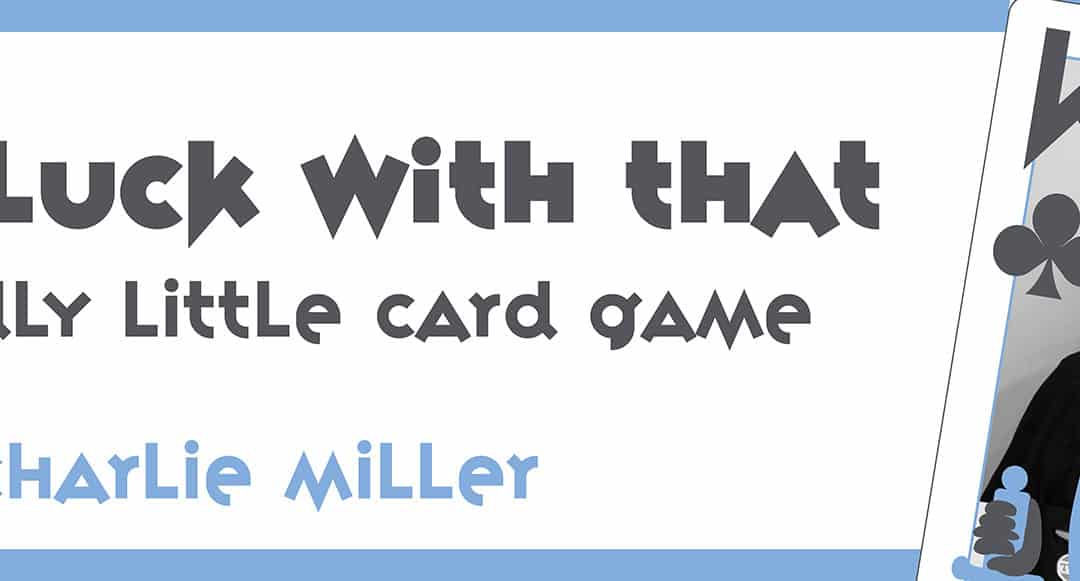
by Erin Long | Mar 5, 2019 | Hidden from Archive

Recently one of our young associates came into the office and found a small pile of quarters, dimes and nickels laying on his desk and asked where it came from. Another associate claimed responsibility as payback for a debt he owed from the previous day, to which the first replied, “I hate change!” That verbal sparring between a couple work buddies reminded me of a time not too long ago and some good lunchtime camaraderie with co-worker’s past.
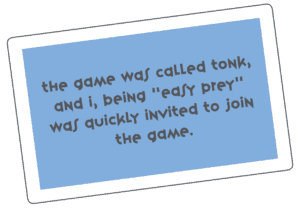 When I began my career as a young draftsman, I was under the tutorship of a Man-Named-Earl. Every day at noon Earl would take his brown bag lunch off to the break room and meet up with several other co-workers for a friendly little card game. The game was called Tonk, and I, being “easy prey” was quickly invited to join the game. Tonk is a simple card game. At the beginning of each round the players all throw a quarter into the pot.
When I began my career as a young draftsman, I was under the tutorship of a Man-Named-Earl. Every day at noon Earl would take his brown bag lunch off to the break room and meet up with several other co-workers for a friendly little card game. The game was called Tonk, and I, being “easy prey” was quickly invited to join the game. Tonk is a simple card game. At the beginning of each round the players all throw a quarter into the pot.
The deal is a five-card hand and the object is to use up your cards to go out first. You used your cards by either creating runs of three or more cards in the same suit, or three or more cards of the same face value. You could lay your runs down on the table or hold them in your hand. If cards were laid on the table other players could possibly play out on your down cards and win the pot before you. A card played on down cards also prevents the player from going out with the low hand. There are three ways to win the pot.
• You can play out first
• You can be dealt Five 10-point cards. 50-points is an automatic winner.
• Or you can gamble that you have been dealt the lowest hand at the table and throw down on your turn. The trouble being, if someone has a hand with an equal or lower point value, instead of collecting the pot you had to pay the pot double.
By the end of lunch there would be a lot of change on the table, usually stacked in front of one or two of the better players. Some of the regular players even keep jars of quarters at their desk to display their winnings, and at least one of the engineers kept a daily log tally of his game winnings (keeping track for the IRS no doubt). Depending on how many were playing, a big winner could rake in as much as five or six dollars in change during lunch. That was worth a little bit more in 1980 then it is worth today.
One of the usual winners of the card games was Earl, and he took great pleasure in “fleecing” young “Newbies” like me. When I first began to play, a lot of my pocket change, and some of my folding money, was routinely divided among my senior colleagues. But over time I learned the strategies to winning. I learned when it was best to hold them, and what could be laid down without fear of being played upon. One game coup is playing out concealed which is referred to as a Tonk. That hand pays the winner double from all the other players. To Tonk, the hand is held until all the cards can be laid down as a winner which means at least a six-card spread. My favorite memory of the game is the first time I took a ‘double” from Earl. He had already laid down a small three card run but held the fourth run card in his hand to prevent his down cards from being played on. He was holding only two cards; a 6 and a 3. On his next turn he was going to declare a low hand win with a total of nine points. It was risky, but usually a sure win as everyone else was still holding 5 cards. He didn’t know I was dealt 2-aces and 3-duces and planned on declaring the low hand had Earl not laid his 3-card run down before my play. I was not sure my 8 points was lower that his two held cards, so I held my hand and let it go by. When Earl put down his nine points to take the win, I slapped my hand down on his and said “Gotcha!” His shocked chagrin turned into a big smile as he said, “I taught you well Kid”.
I personally do not have a dislike for change. You can give me all of it you want too. And if you think I am not going to stoop over and pick up that miscellaneous penny found on the floor, well Good Luck with that.
Read more
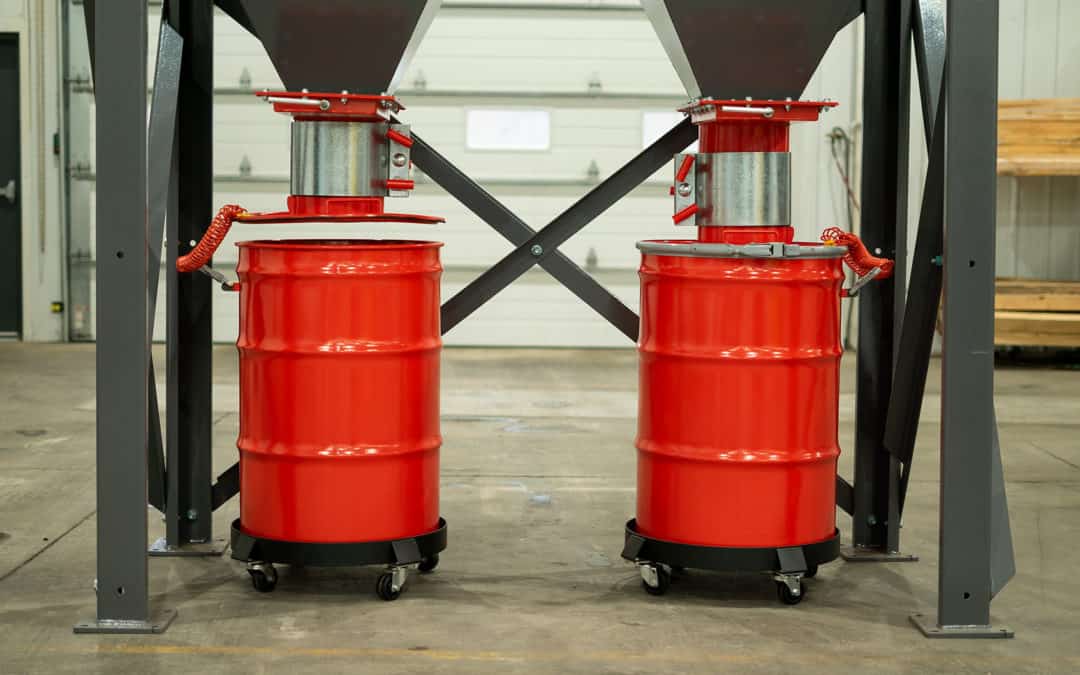
by Erin Long | Mar 5, 2019 | Hidden from Archive
Rhino Drum Replaces Airlock for Passive Explosion Isolation
If your dust is combustible, you’ve probably been told that your system needs an NFPA approved airlock. Airlocks are expensive and complicated pieces of equipment. Now Imperial Systems is offering a simpler and more efficient solution: the Rhino Drum.
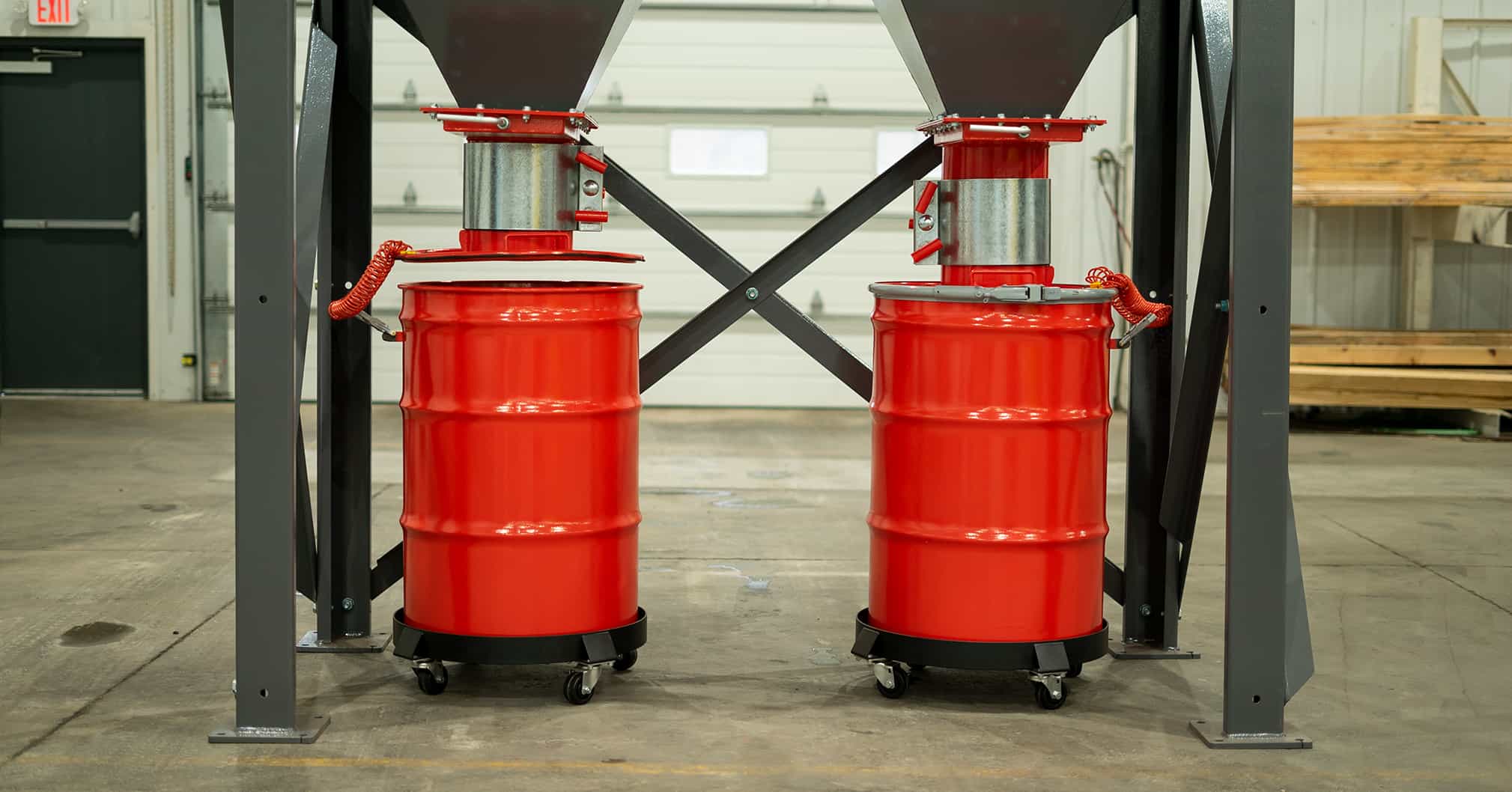
 The Rhino Drum is a third party tested and NFPA approved product that takes the place of an airlock for passive explosion isolation. In explosion testing, the Rhino Drum handled up to 7 psi. It meets the NFPA 69 and 654 Standards as a passive explosion isolation device, so if a deflagration occurs, it won’t escape outside the drum.
The Rhino Drum is a third party tested and NFPA approved product that takes the place of an airlock for passive explosion isolation. In explosion testing, the Rhino Drum handled up to 7 psi. It meets the NFPA 69 and 654 Standards as a passive explosion isolation device, so if a deflagration occurs, it won’t escape outside the drum.
A standard airlock requires a motor, starter, wiring, and wipers. It also requires maintenance on all these parts. The Rhino Drum requires no motor or wiring and is virtually maintenance free, with no moving parts. It is far less expensive than an airlock as well as saving time on parts and labor. The simplistic design eliminates many of the possible problems, including injuries, that can happen with an airlock.
The Rhino Drum uses a metal collar to replace connection materials like flex hose, which can melt in an explosion. The twist and lock design has been developed with customers in mind, making barrel changeout easier and quicker. It is also tool-free.
The Rhino Drum features a drum dolly, heavy-duty drum, optional grounding wire, tool-free sliding coupler, and slide gate featuring an improved aluminum handle. One major advantage of the slide gate is that it allows drum changeout without shutting down the dust collector. By simply closing the slide gate, the dust collector can continue to operate normally while the drum is replaced.
The changeout process does not require any tools, and the entire process can be completed by one person (depending on the weight of the full drum).
This product is just one of the many innovations developed by Imperial Systems to provide customers with the best products and make dust collection easier and safer.
Follow these steps to complete the changeout process:
1. Close the Rhino Drum slide gate (if needed)
2. Loosen the t-handles
3. Detach the bonding wire
4. Unsnap and twist off the lid
5. Roll the barrel out
6. Return the barrel and replace the lid and bonding wire
7. Tighten t-handles and open slide gate (if closed)
Learn more about the Rhino Drum Kit as an alternative to explosion isolation valves.
Read more
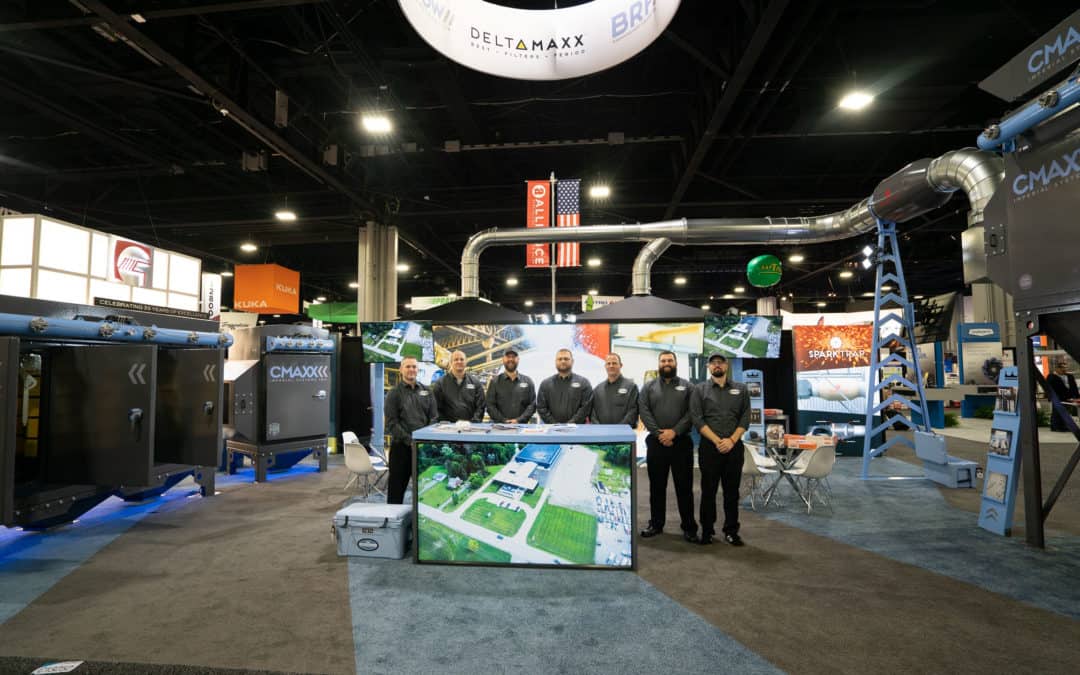
by Erin Long | Mar 5, 2019 | Hidden from Archive
In November, 14 members of the Imperial Systems team and representatives from across the country travelled to Atlanta for FABTECH 2018. As one of the biggest fabrication trade shows in the country, FABTECH is always an opportunity for us to put the CMAXX and other products on display. It’s also a great opportunity to network and meet others in the industry, including potential new representatives and customers.
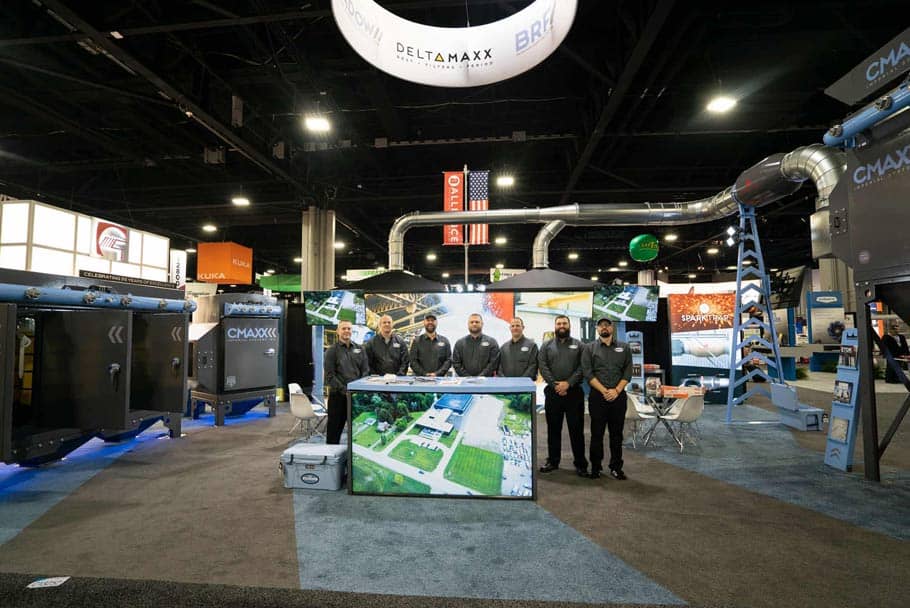
“This year was our best turnout ever,” says Justin Badger, Imperial Systems Sales Manager. Not only did the Imperial Systems booth draw attention with its three CMAXX collectors and other equipment on display, but four other companies also had CMAXX collectors in their own booths. AKS Cutting Systems, Koike, Dynatorch, and Plasma Automation each displayed a CMAXX on their own equipment at the show.
Imperial Systems staff and representatives had the opportunity to meet and talk to many potential customers over three very busy days. The Imperial Systems booth looks better every year as the marketing team works with the sales team to draw attention to our products. This year, an exciting new product was the Rhino Drum, an explosion-tested drum kit recently added to the company lineup.
This was the first year for the Imperial Systems booth to display three CMAXX collectors, and the first time four other manufacturers had their own CMAXX collectors on display with their own equipment. FABTECH is a chance every year for Imperial Systems to demonstrate our growth as a major player in the dust and fume collection market.
“It’s an exhausting couple of days, but it’s completely worth it,” a sales representative says. “It’s amazing how many people come by the booth and want to check out the CMAXX. They want to open the doors, try out the lift rails, check out the filters. They’re always really impressed with the quality.” With more people visiting the booth this year than ever before, more people got to appreciate our products and meet our staff in person.
Read more
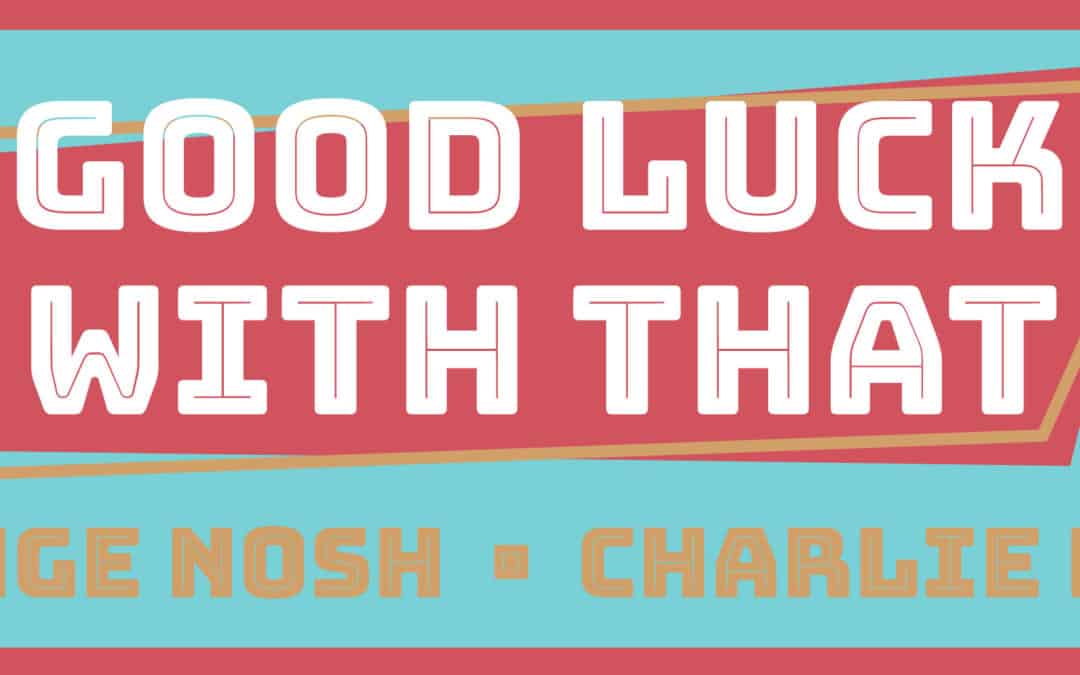
by Scott Stearns | Nov 26, 2018 | Hidden from Archive

My profession has taken me to many interesting places across the US, Mexico, and Canada over the past 48 years. In my travels I visited a wide variety of business ventures from a mushroom farm in Kentucky, to a prosthetic breast manufacturer in Texas. I’ve been to automotive plants in Mexico and nuclear fuel cell producers in Canada. Work opportunities have taken me to 38 of our 50 Great States, from Maine to California, and I’ve seen many wonders along the way. Some of the most memorable things about all those trips are the regional foods I’ve eaten.
Leaving my Pittsburgh home and moving to Cincinnati in 1971 was my first encounter with regional cuisine. I had only been in Cincinnati a few weeks and was just learning my way around. A friend had invited me to join him for lunch at the chili parlor. It had been a while since I had any of my mom’s homemade chili and that sounded great. When the food came I was served a plate of spaghetti with about a half pound of grated cheddar cheese on top. I told the waitress she made a mistake, I ordered chili! She looked at me like I had two heads. I soon learned to love “Cincinnati Chili”. Whether it is Gold Star, Skyline, or Moonlight Chili, it’s all good. Another Cincinnati delicacy is Goetta, sometimes referred to as “Cincinnati Caviar”. The German immigrants brought Goetta to Cincinnati. It is made with ground pork or beef, mixed with steel cut oats and seasonings, and then pan fried to a crispy brown. It is a breakfast staple served with eggs and grits.
I’ve eaten many stranger regional foods in my travels. In previous articles I wrote about my first field trip to Syracuse with A-Man-Named-Earl. Being a very “junior” apprentice on that trip, I was dependent on Earl to pay all the travel expenses, including meals. The very first night Earl took me to a Syracuse bar. As we sat at the bar to watch the ball game, Earl asked for a beer and a “Bean Sandwich”. The bartender pulled a large can of pork-and-beans from the cooler. He scooped out a wad of cold beans, spread it on sliced white bread, and handed it to Earl. He then asked if I wanted one, but I passed on the offer. Thankfully, we did go out to dinner at a little nicer place after that.
Later in my career another experience found me in Mexico with one of our installation mechanics. He had previously spent a year in Mexico on another project. He knew the language and basically how to stay safe in a foreign country. He was with me to help field measure, and to watch my back. On our last night in Mexico he suggested a better steak house for dinner. He ordered for both of us and began with an appetizer of Cridillas. He dug right in when they arrived. When I sampled the dish, he stifled a snicker and asked me if I knew what I was eating. I said I was pretty sure they are better known as “Rocky Mountain Oysters” in the western states.
 Another delicacy I’ve tried, and surprisingly enjoyed, is escargot, which is a fancy French word for snails cooked in herb butter. I found them to be a bit chewy and tasted just like..Snails! Along with the snails I also enjoyed a meal of frog legs. In Canada I’ve tried Poutine, which is cheese curds with French fries covered with brown gravy. In Milwaukee I had Butter Burgers; a burger served with big pads of butter that melt into the bun. Some places serve them with so much butter that the plate will be swimming with it. I’ve eaten fried rattle snake in Texas, and fried gator in Florida. But, I’ve never tried fried Twinkies. Some things are just too gross to consider. Louisville, Kentucky is known for its barbecue and hosts one of the largest annual barbecue festivals in the country. There is another Kentucky dish called Burgoo made with four or five different meats and vegetables. It is cooked into a thick soup, or stew. I believe they created this dish just to get rid of leftovers. One of my more unique dining experiences came when a Japanese customer I became friends with invited me to an authentic Japanese restaurant for a traditional meal. We sat on floor mats and were served at a low table. I did not speak Japanese, so my host interpreted for me. I tried the traditional meal he suggested consisting of soup, rice, tofu, seaweed, pickled radish, and tempura. I enjoyed the experience and left there very full. On recent travels I discovered some of my co‑workers enjoy Sushi. Initially, the thought of eating raw fish was not too appealing, but I did try it and found it to be much better than I expected. One of the weirder snack foods I’ve tried is meal worms. When these little guys are dropped into hot oil they puff up about 20 times their size. They have the consistency of crunchy cheese puffs and taste a little like fried pork rind. I understand them to be full of protein.
Another delicacy I’ve tried, and surprisingly enjoyed, is escargot, which is a fancy French word for snails cooked in herb butter. I found them to be a bit chewy and tasted just like..Snails! Along with the snails I also enjoyed a meal of frog legs. In Canada I’ve tried Poutine, which is cheese curds with French fries covered with brown gravy. In Milwaukee I had Butter Burgers; a burger served with big pads of butter that melt into the bun. Some places serve them with so much butter that the plate will be swimming with it. I’ve eaten fried rattle snake in Texas, and fried gator in Florida. But, I’ve never tried fried Twinkies. Some things are just too gross to consider. Louisville, Kentucky is known for its barbecue and hosts one of the largest annual barbecue festivals in the country. There is another Kentucky dish called Burgoo made with four or five different meats and vegetables. It is cooked into a thick soup, or stew. I believe they created this dish just to get rid of leftovers. One of my more unique dining experiences came when a Japanese customer I became friends with invited me to an authentic Japanese restaurant for a traditional meal. We sat on floor mats and were served at a low table. I did not speak Japanese, so my host interpreted for me. I tried the traditional meal he suggested consisting of soup, rice, tofu, seaweed, pickled radish, and tempura. I enjoyed the experience and left there very full. On recent travels I discovered some of my co‑workers enjoy Sushi. Initially, the thought of eating raw fish was not too appealing, but I did try it and found it to be much better than I expected. One of the weirder snack foods I’ve tried is meal worms. When these little guys are dropped into hot oil they puff up about 20 times their size. They have the consistency of crunchy cheese puffs and taste a little like fried pork rind. I understand them to be full of protein.
There are a few foods I have tried with regret; Oysters-On-The-Half-Shell and Mud Bugs. I know there are folks who love Oysters, but I made the mistake of chewing this glob of nastiness when I tried them. I was unaware that the proper way to eat them is to just let them slide down your throat. This is probably to sneak the oysters past your taste buds before they realize it is in your mouth. I hear some people chase them with a shot of Vodka, probably to kill the taste. Mud Bugs are better known as crawfish and are a Louisiana treat usually prepared in a boil. I’ve thought about trying these on several occasions, but just could not get past the smell. I’ve only seen these served at festivals, and they do seem to be enjoyed and sell out fast. Maybe someday I will build up the nerve to try them.
I do have a few more years of travel ahead of me, and if you think I will refrain from sampling the local cuisines on my ventures, well Good Luck with that!
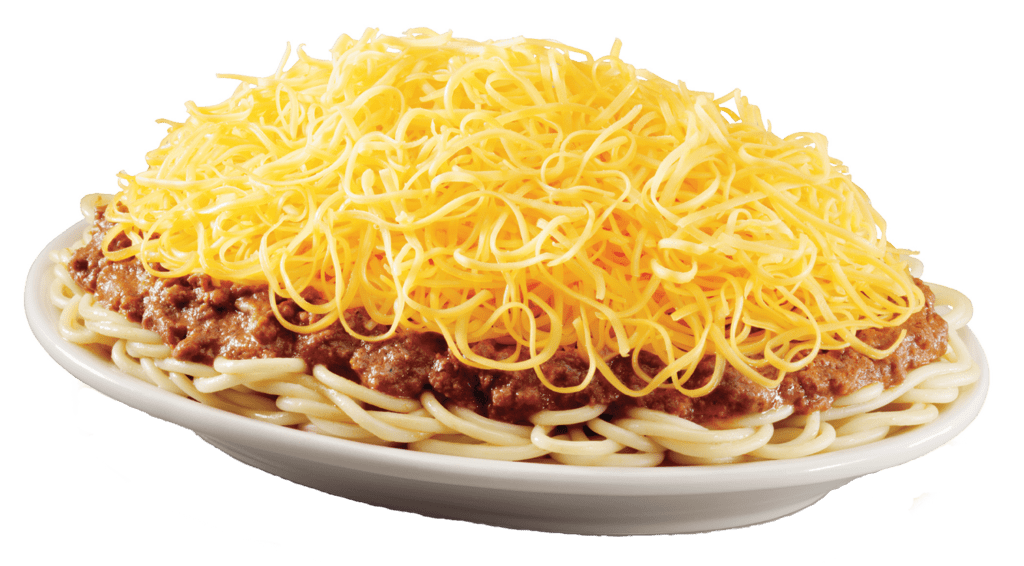
Read more

 Did you start here as an engineer?
Did you start here as an engineer? Outside of work, you dedicate a lot of time to the Boy Scouts, right?
Outside of work, you dedicate a lot of time to the Boy Scouts, right? You said you love your job working here.
You said you love your job working here.
 2018 was another great year for the Imperial Systems Annual Chili Cook-Off. There were a total of twelve chilis to try in varying heats ranging from mild to hot. After a taste (or two) of all the chilis, taste testers were able to cast their votes for their three favorite chilis.
2018 was another great year for the Imperial Systems Annual Chili Cook-Off. There were a total of twelve chilis to try in varying heats ranging from mild to hot. After a taste (or two) of all the chilis, taste testers were able to cast their votes for their three favorite chilis.

 When I began my career as a young draftsman, I was under the tutorship of a Man-Named-Earl. Every day at noon Earl would take his brown bag lunch off to the break room and meet up with several other co-workers for a friendly little card game. The game was called Tonk, and I, being “easy prey” was quickly invited to join the game.
When I began my career as a young draftsman, I was under the tutorship of a Man-Named-Earl. Every day at noon Earl would take his brown bag lunch off to the break room and meet up with several other co-workers for a friendly little card game. The game was called Tonk, and I, being “easy prey” was quickly invited to join the game.

 The Rhino Drum is a third party tested and NFPA approved product that takes the place of an airlock for passive explosion isolation. In explosion testing, the Rhino Drum handled up to 7 psi. It meets the
The Rhino Drum is a third party tested and NFPA approved product that takes the place of an airlock for passive explosion isolation. In explosion testing, the Rhino Drum handled up to 7 psi. It meets the 



 Another delicacy I’ve tried, and surprisingly enjoyed, is escargot, which is a fancy French word for snails cooked in herb butter. I found them to be a bit chewy and tasted just like..Snails! Along with the snails I also enjoyed a meal of frog legs.
Another delicacy I’ve tried, and surprisingly enjoyed, is escargot, which is a fancy French word for snails cooked in herb butter. I found them to be a bit chewy and tasted just like..Snails! Along with the snails I also enjoyed a meal of frog legs.